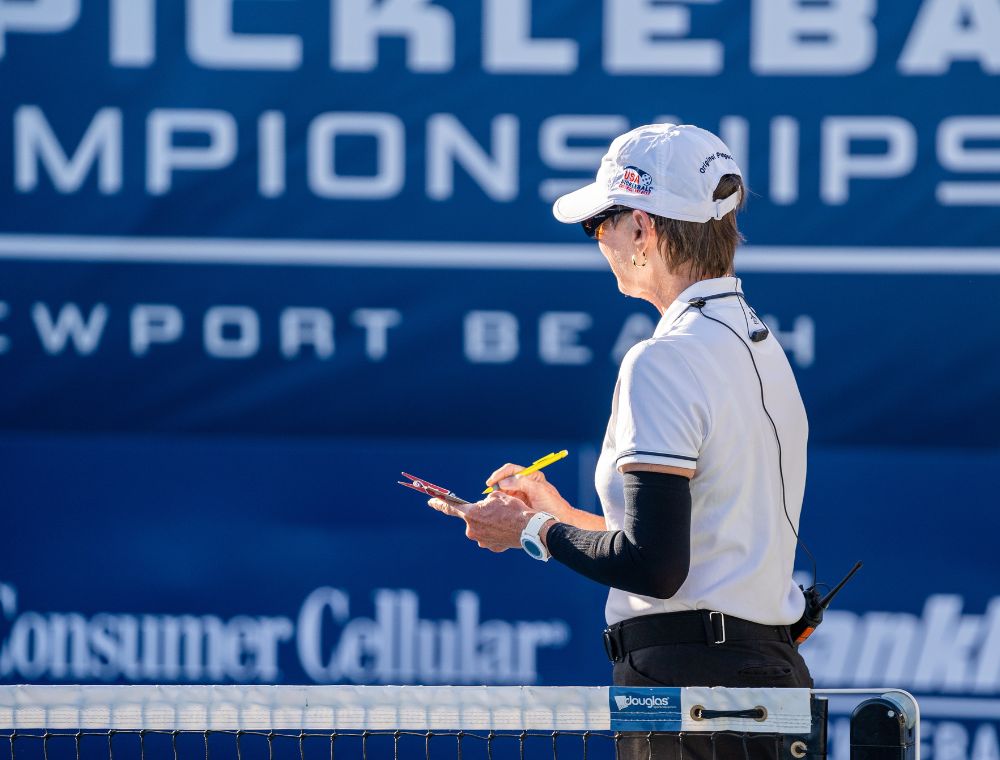- PICKLEBACKCLUB
- Posts
- New Pickleball Rules Unveiled ✏️
New Pickleball Rules Unveiled ✏️
Discover what’s changing on the court.
PICKLEBACKCLUB
Happy Tuesday PICKLEBACKCLUB Members! 🏓
Hope you're smashing those serves and enjoying every rally on the court. We're excited to serve you some of the latest updates directly from the USA Pickleball headquarters.
As the game evolves, so do the rules, and 2023 brings a fresh set of changes aimed to enhance your playing experience, whether you're competing or just enjoying a friendly match. Dive in to discover what's new and how it will shape the future of our beloved sport. And don’t read too fast or you’ll miss this week’s Tip of the week!
✏️ USA Pickleball's Mid-Year Rulebook Revisions for 2023
It's that time of year when USA Pickleball showcases its commitment to evolving the sport by introducing key rule revisions. Aimed at refining gameplay and achieving greater parity between professional and amateur tournaments, these updates reflect a nuanced understanding of the game's dynamics.
Here's a closer look at these changes and their implications for pickleball enthusiasts:
What's New: Moving to a single elimination without consolation in the "Pro and Senior Pro Player Brackets" ensures that each match counts. While this may up the stakes, it promises viewers a more exciting and dramatic showdown.
Implications: This format emphasizes skill and strategy in high-pressure situations, making it essential for players to be on top of their game. However, it's intriguing that the fate of the non-finalists is left to tournament officials. This discretionary approach might ruffle some feathers, especially if it's perceived as lacking transparency.
What's New: The revised rule guarantees players a minimum of two scheduled matches in sanctioned tournaments, except in the newly introduced single elimination format.
Implications: By giving every player/team a fair shot at showcasing their skills, USA Pickleball is reiterating its commitment to inclusivity. This also gives players a chance at redemption, ensuring one bad match doesn’t necessarily spell the end of their tournament journey.
What's New: An enhanced role for referees. No longer just scorekeepers, referees now act as the ultimate positioning authority, aiming to reduce game interruptions.
Implications: While this might initially seem like an increased responsibility for referees, it's designed to make games smoother. Trust in a referee's authority is paramount here. Players and fans alike need to embrace this change, understanding that it’s aimed at maintaining the game’s flow.
What's New: A considerable simplification by doing away with a slew of older serving rules. It’s all about keeping the game straightforward and focused.
Implications: This is a blessing for newcomers and casual players who often find themselves bogged down by the intricacies of serving rules. Streamlining these rules might increase the game's appeal to a broader audience, fostering its growth.
What's New: A more structured and clearer approach to identifying faults and enforcing penalties, with special attention given to technical fouls.
Implications: Clearer rules translate to fewer disputes. By distinguishing the moment a fault is identified from when the penalty is enforced, games will witness fewer stoppages and disagreements.
USA Pickleball’s mid-year revisions showcase a delicate balance between honoring the sport’s essence and adapting to its growing and changing dynamics. While change can be daunting, it’s essential to remember that these revisions arise from a deep understanding and love for the game.
The objective remains to enhance the playing experience for everyone involved - from casual enthusiasts to pro players, referees to spectators. Here’s to a new chapter in the world of pickleball!
🐢 Gain an Edge by Slowing Down your Game
Slow play in pickleball can be a valuable strategy, offering several benefits to players who utilize it effectively:
@effectivepickleball #pickleball - how to slow the down. A tip from @brionespickleball ! #pickleballtraining
Control and Placement: Slow play allows you to have better control over your shots. You can precisely place the ball in the desired location, making it difficult for your opponents to anticipate and return effectively.
Minimizing Errors: Slower shots often result in fewer unforced errors. By taking your time and placing the ball accurately, you reduce the risk of hitting the ball out of bounds or into the net.
@enhancepickleball By slow volleys, I mean volleys that are coming slow to you. You hit these harder. For hard volleys I’m referring to fast shots coming at ... See more
Forcing Errors: Slower play can frustrate opponents who prefer a fast-paced game. It can force them to make impatient, rushed shots, leading to errors on their part.
Resetting the Point: When you're in a defensive position or out of position, a slower shot can reset the point and give you a chance to regain control of the rally.
Disrupting Rhythm: Alternating between slow, soft shots (dinks) and faster shots can disrupt your opponent's rhythm and timing. It keeps them guessing and makes it harder for them to settle into a consistent strategy.
@engagesporting Slowing down and staying present is key! @pickleballjourney #engage #sports #pickleball #quicktip #tips #tricks #coaching #foryoupage
Building Confidence: Slower play can help build your confidence by allowing you to focus on executing precise shots and reducing the pressure of hitting powerful shots consistently.
Counteracting Fast Opponents: If your opponents are playing a fast-paced game, slowing it down can be an effective counter-strategy. It forces them to adjust to a different tempo, potentially leading to mistakes on their part.
Got a story that's as smashing as a perfect serve? We're all ears! Share your unique pickleball journey or brand with our community and shine in our subscriber spotlight.
Ace your game by mastering the rules!
Keep the courts lively and your opponents guessing,
PICKLEBACKCLUB



